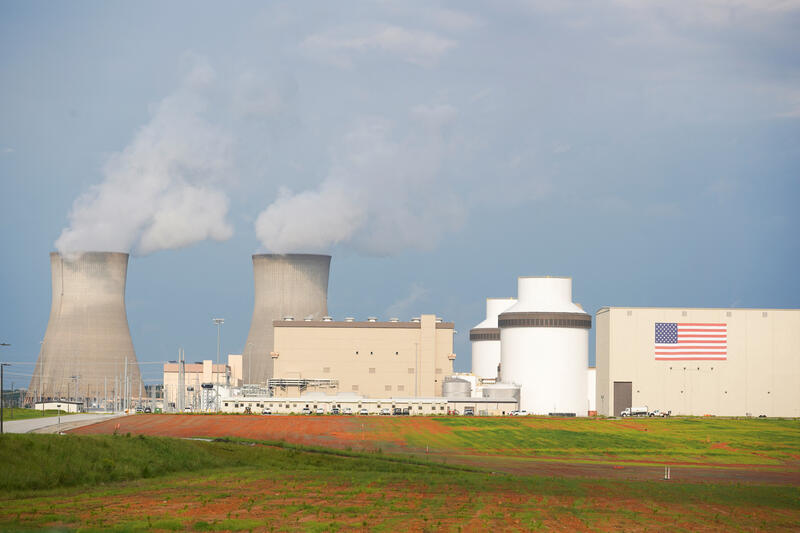pctay123
Publish Date: Thu, 19 Sep 2024, 06:01 AM

LITTLETON, Colorado, Sept 19 (Reuters) - New nuclear power plants in Georgia have helped flip the state's power mix so that electricity from clean energy sources has exceeded fossil fuel electricity output for the first time.
Georgia's higher nuclear generation has in turn helped to slash the carbon intensity of power generation within the Southern Services power system, which produces electricity and power for most of Georgia, Alabama and parts of Mississippi.
The generation mix reversal and drop in power emissions demonstrate the impact that an expanded nuclear fleet can have on energy systems, despite the substantial cost overruns and construction delays that beset the Georgia reactors.
LONG TIME COMING
The Vogtle Electric Generating Plant in Waynesboro, Georgia is the largest nuclear plant in the United States, with a power generating capacity of 4,536 megawatts (MW).
The first two reactor units entered production in the late 1980's, and between 2012 and 2022 generated around 27% of Georgia's electricity, according to data from Ember.

Since the beginning of 2023, that nuclear generation share has climbed to 30% thanks to the start-up of the final two reactors at the Vogtle site.
Preliminary construction on the final two reactors - Vogtle 3 and Vogtle 4 - began in 2009, and were originally slated to cost around $14 billion, according to a Vogtle Construction Monitoring report.
However, a series of development delays and massive cost overruns meant the final reactors only entered production within the last 18 months, nearly 15 years after project commencement.
The final bill for units 3 and 4 was over $35 billion, according to a report titled Plant Vogtle: The True Cost of Nuclear Power in the U.S., issued this year by a group of Georgia consumer advocates.
The report's authors claim that the final cost of electricity generated by the Vogtle reactors will be $10,784 per kilowatt hour (KWh), which would make it "the most expensive electricity in the world."
In contrast, electricity produced from wind farms, solar projects and natural gas-fired plants ranges from $1,000 to $1,500 per KWh, the report added.
UP AND RUNNING
Leaving the cost issue aside, the impact of the now fully operational Vogtle plant is starting to become apparent.

From 2018 through 2022, the Vogtle site generated an average of 2,813 gigawatt hours (GWh) of electricity a month for the state of Georgia, around 27% of total state electricity supplies according to Ember.
Since Vogtle 3 started operations in April 2023, that generation total rose to an average of around 3,500 GWh a month, and climbed to over 4,600 GWh in May 2024, when Vogtle 4 first started operating.
CHANGING MIX
The sharply higher production from nuclear reactors has impacted Georgia's electricity mix in several key ways.
Firstly, the share of generation from nuclear reactors jumped to 37% in May - a full 10 percentage point above the long-term average - as the Vogtle 4 plant came online.
Secondly, the state's overall electricity generation total climbed to new highs as more nuclear generation was added to the output from other sources.
During the January to May period, Georgia's total electricity generation was 55,634 GWh, which was a record for that period and marked a 12.3% jump from the same months in 2023, Ember data shows.
Thirdly, the higher level of nuclear generation also boosted Georgia's total clean electricity output levels, which exceeded generation from the state's fossil fuel assets during March, April and May of this year for the first time on record.
Clean power's share of the Georgia generation mix was a record 47% for the January to May period, and compares to 41.5% during the same months a year ago.
Sustained output from Vogtle 3 and 4 over the remainder of 2024 could help push the clean power share of the overall mix closer to 50%.
WIDER IMPACT
Vogtle's full ramp-up was also evident farther afield, with the carbon intensity of power production of the Southern Company Services power system dropping by 14% so far in 2024 from 2023's average levels.
Roughly 427 grams of carbon dioxide were discharged by the Southern power system for every kilowatt hour of electricity generated so far in 2024, according to Electricitymaps.com.

That carbon intensity compares to 440 grams of CO2/KWh in 2023, and 467 g/CO2/KWh in 2022.
For Georgia's power consumers, the steep reduction in emissions per unit of electricity, along with higher overall electricity supplies, are a favourable outcome of the completion of the Vogtle site.
And over the longer term, rising quantities of clean power may become a more significant aspect of the energy sector than the final cost of any particular generation asset.
The opinions expressed here are those of the author, a columnist for Reuters.
Sign up here.
https://www.reuters.com/business/energy/georgias-new-nuclear-plants-drive-us-power-sector-clean-up-maguire-2024-09-19/












